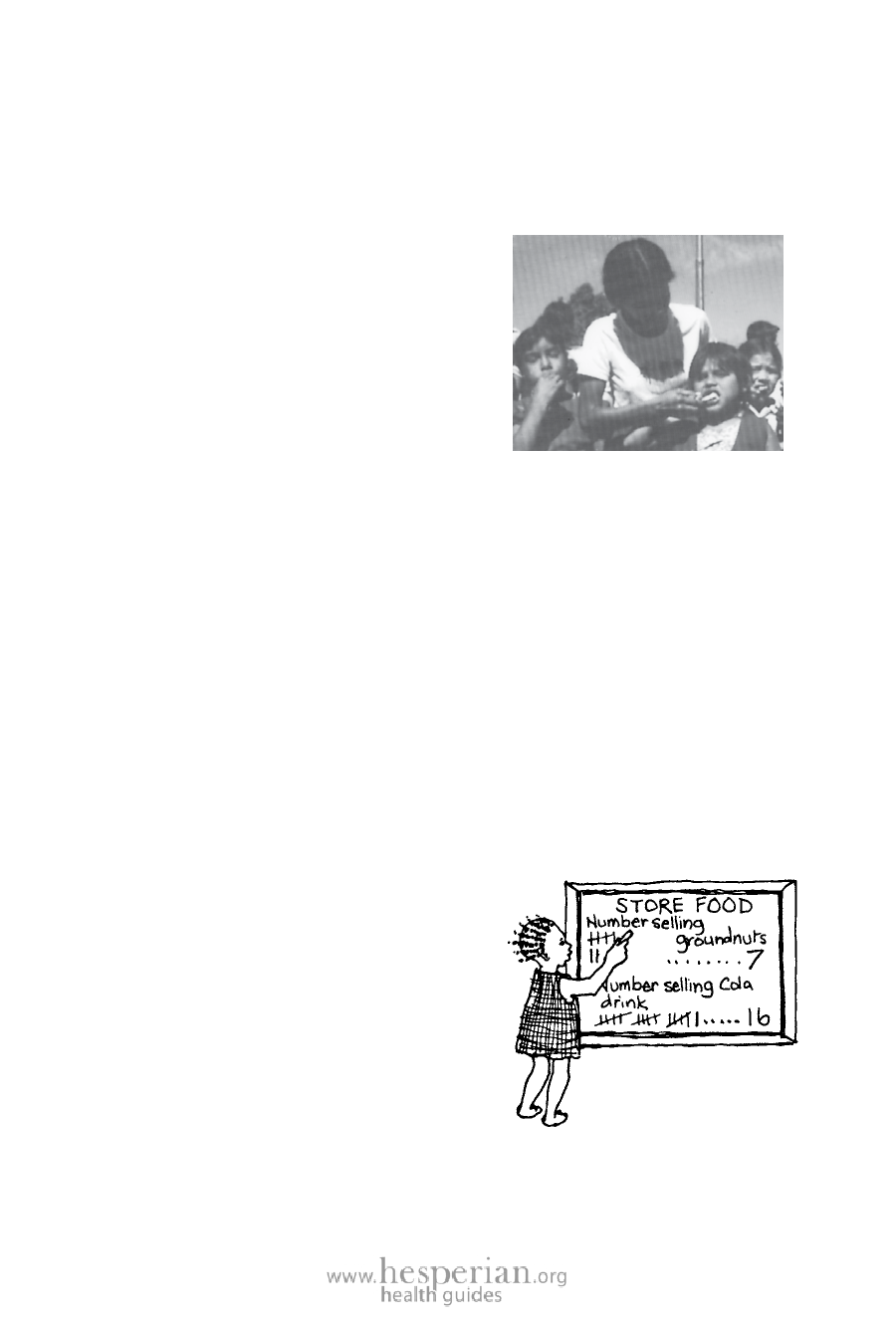
24 Where There Is No Dentist 2012
4. Let Children Help Each Other*
In most families, older children have important work to do—taking care
of their younger brothers and sisters. These older children can do much
to teach the younger ones about care of teeth and gums. For example:
• When they feed their younger
brothers and sisters they can
encourage them to eat good food,
like fruit instead of candy.
• They can do a play or puppet show
about care of teeth and gums.
• They can check the teeth and
gums of the younger children and
‘score’ them on how healthy they
are (see p. 60).
• Best of all, they can actually clean
the teeth of the younger ones,
and show them how to clean their
own teeth when they are able.
Here a group of school children
in Ajoya, Mexico is putting a
high-fluoride paste (see p. 211)
on the teeth of the younger
children.
5. Teach About Teeth and Gums
Together with Other Subjects
Teeth and gums are part of a bigger health picture. Teach about them in
class at the came time.
Eating good food can be part of a discussion on nutrition, teeth,
farming methods, and the politics of who owns the lands.
Cleaning the teeth can be part of a
discussion on hygiene, clean water, and
traditions and customs.
A good way for school children to learn
about using numbers is to do a survey in
the community.
The results will tell the children
something about health problems in
their community. For an example of a
survey of health problems, see page
3‑14 of Helping Health Workers Learn.
*For more ideas on how school children can help each other, write to Child-to-Child Trust,
Institute of Education, 20 Bedford Way, London, WC1H 0AL, UK. Tel: 44-207-612-6649.
Fax: 44-207-612-6645. E-mail: ccenquiries@ioe.ac.uk. Website: www.child-to-child.org